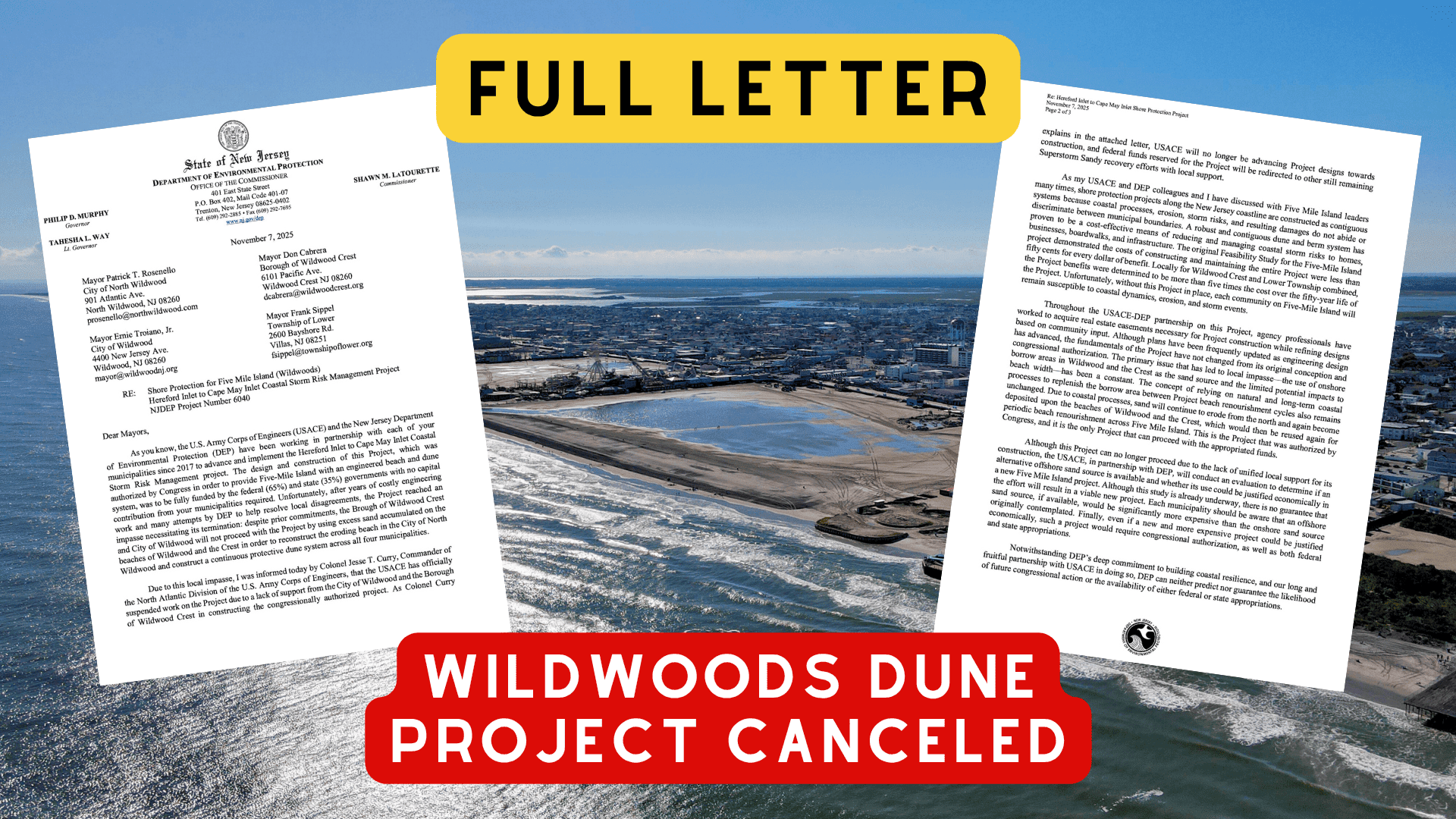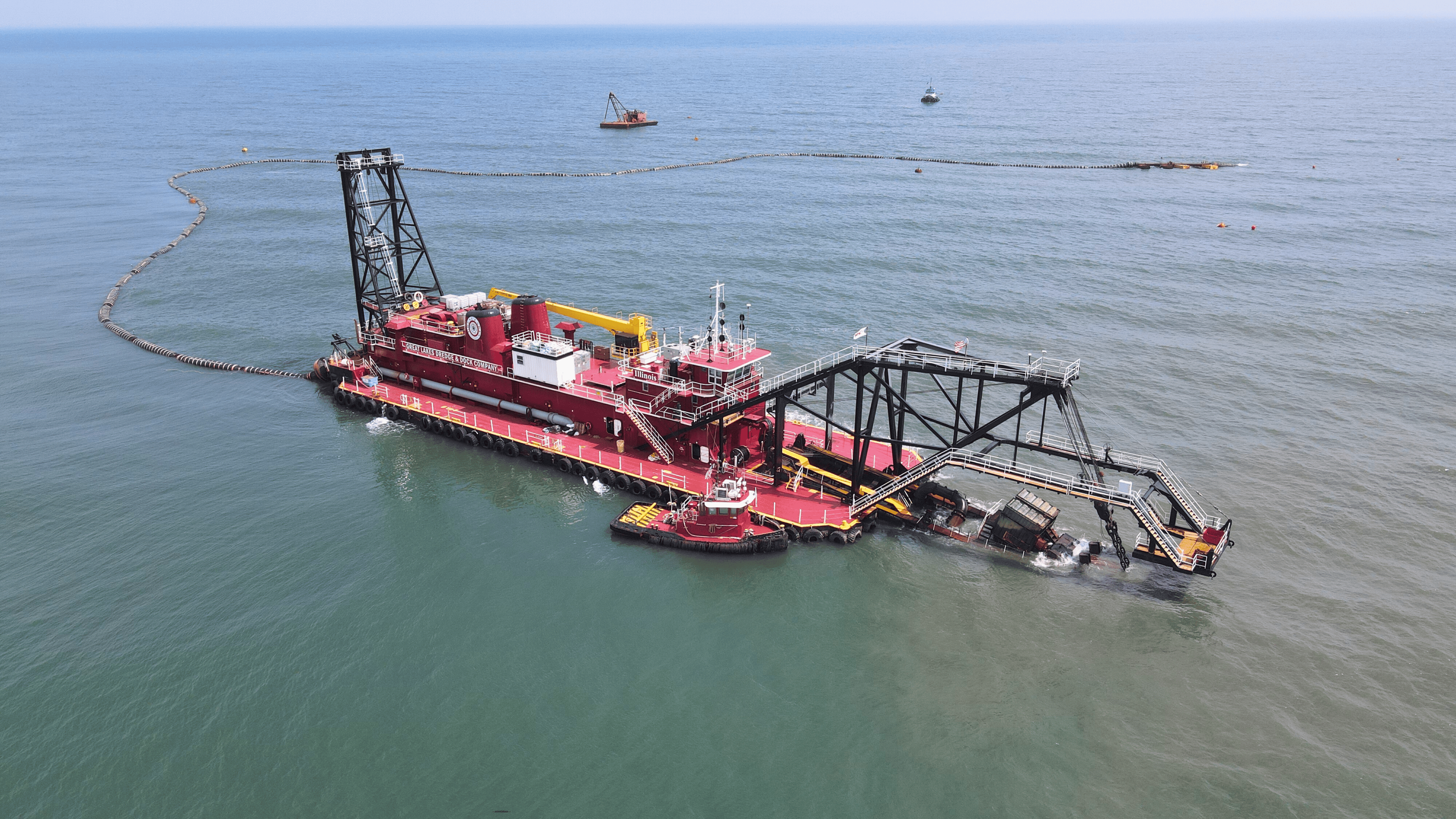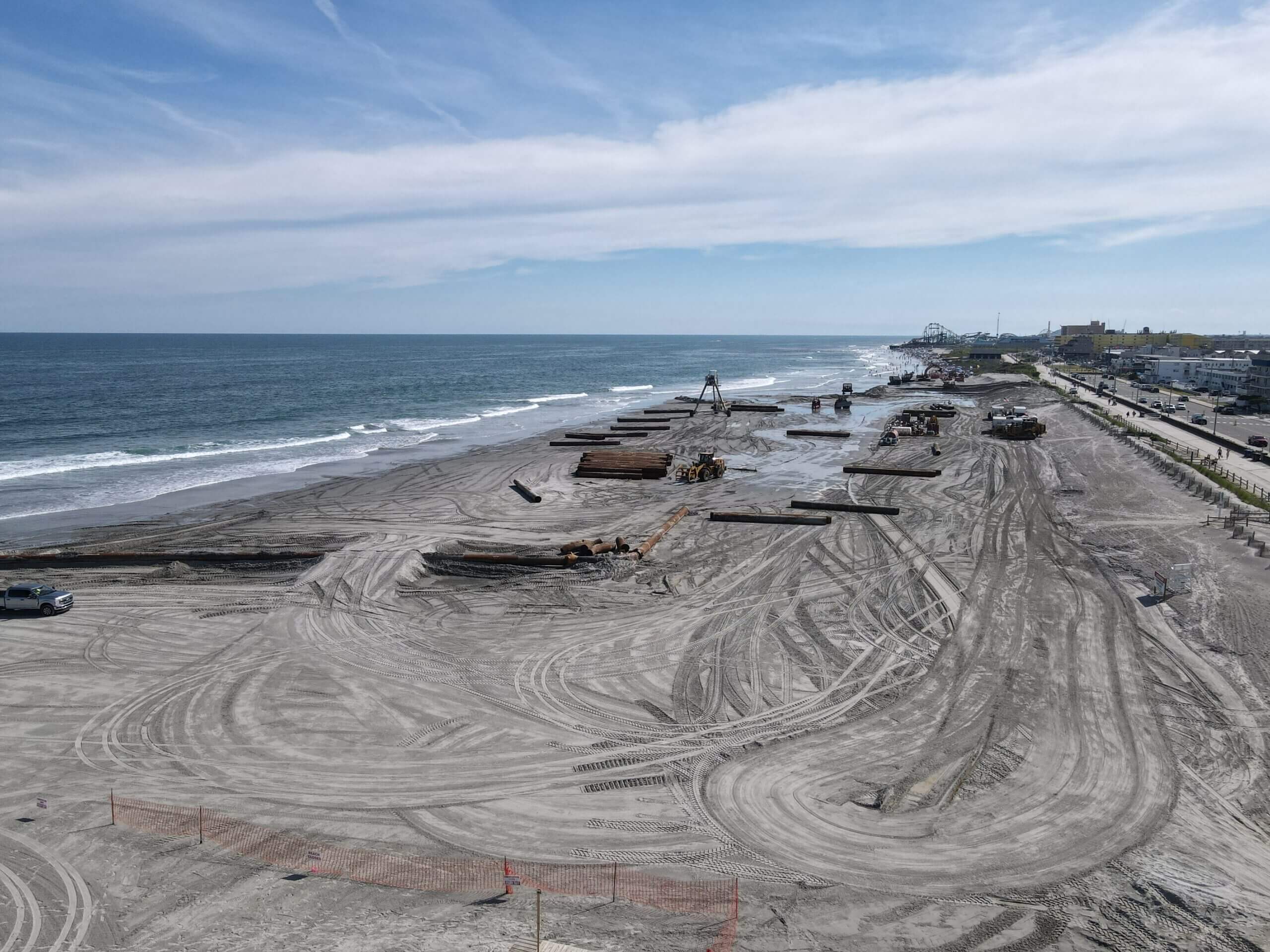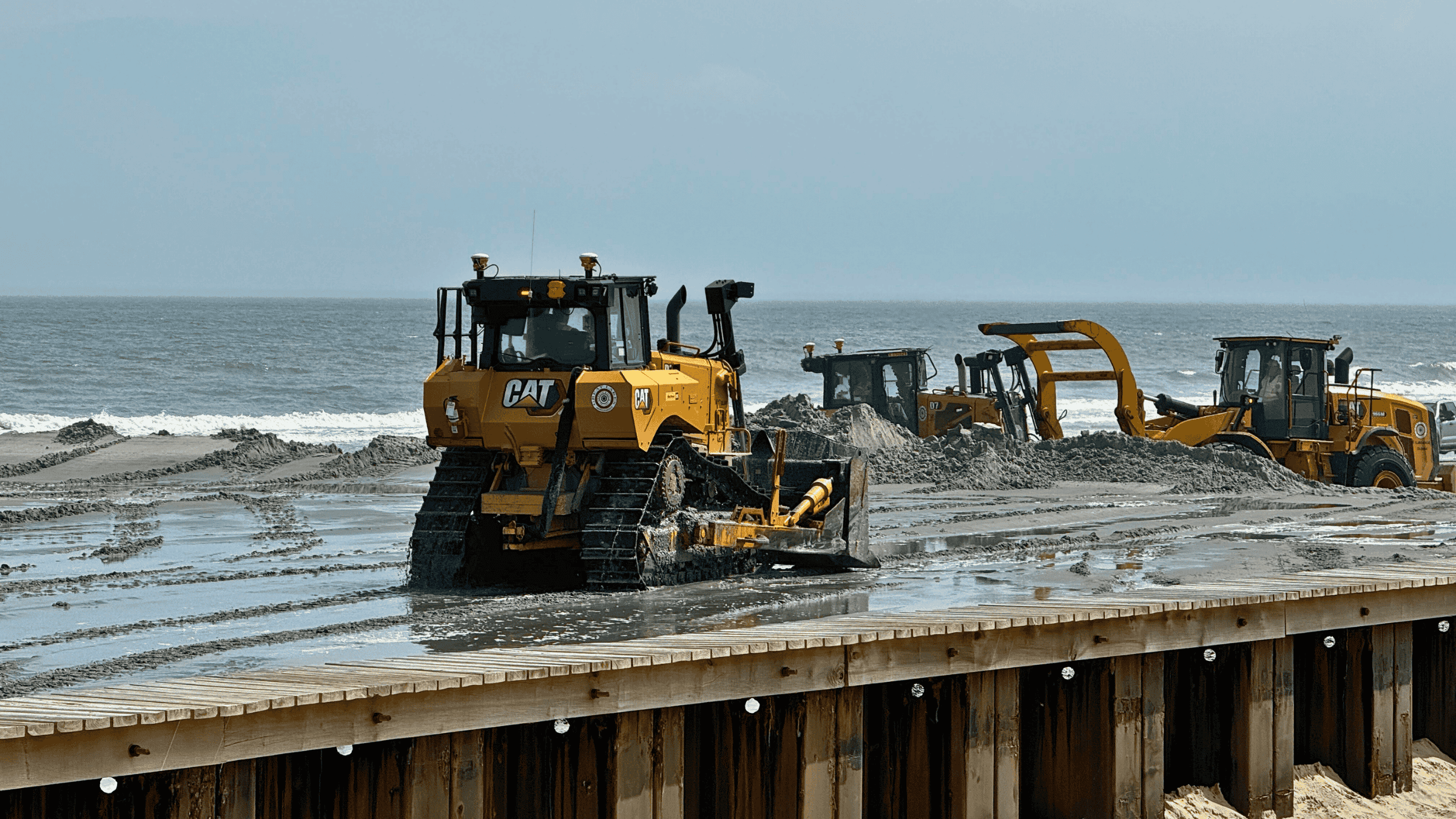Read the Full DEP Letter Ending the Wildwood Dune Project
Below is the full letter that the NJDEP Commissioner sent off to all the Mayors in the Wildwoods on the Hereford Inlet to Cape May Inlet Coastal Storm Risk Management project.
“Dear Mayors,
As you know, the U.S. Army Corps of Engineers (USACE) and the New Jersey Department of Environmental Protection (DEP) have been working in partnership with each of your municipalities since 2017 to advance and implement the Hereford Inlet to Cape May Inlet Coastal Storm Risk Management project.
The design and construction of this Project, which was authorized by Congress in order to provide Five-Mile Island with an engineered beach and dune system, was to be fully funded by the federal (65%) and state (35%) governments with no capital contribution from your municipalities required.

Read the Full DEP Letter Ending the Wildwood Dune Project
Unfortunately, after years of costly engineering work and many attempts by DEP to help resolve local disagreements, the Project reached an impasse necessitating its termination: despite prior commitments, the Borough of Wildwood Crest and City of Wildwood will not proceed with the Project by using excess sand accumulated on the beaches of Wildwood and the Crest in order to reconstruct the eroding beach in the City of North Wildwood and construct a continuous protective dune system across all four municipalities.
Due to this local impasse, I was informed today by Colonel Jesse T. Curry, Commander of the North Atlantic Division of the U.S. Army Corps of Engineers, that the USACE has officially suspended work on the Project due to a lack of support from the City of Wildwood and the Borough of Wildwood Crest in constructing the congressionally authorized project.
As Colonel Curry explains in the attached letter, USACE will no longer be advancing Project designs towards construction, and federal funds reserved for the Project will be redirected to other still remaining Superstorm Sandy recovery efforts with local support.

A robust and contiguous dune and berm system has proven to be a cost-effective means of reducing and managing coastal storm risks to homes, businesses, boardwalks, and infrastructure. The original Feasibility Study for the Five-Mile Island project demonstrated the costs of constructing and maintaining the entire Project were less than fifty cents for every dollar of benefit.
Locally for Wildwood Crest and Lower Township combined, the Project benefits were determined to be more than five times the cost over the fifty-year life of the Project. Unfortunately, without this Project in place, each community on Five-Mile Island will remain susceptible to coastal dynamics, erosion, and storm events.
Throughout the USACE-DEP partnership on this Project, agency professionals have worked to acquire real estate easements necessary for Project construction while refining designs based on community input.

The primary issue that has led to local impasse—the use of onshore borrow areas in Wildwood and the Crest as the sand source and the limited potential impacts to beach width—has been a constant.
The concept of relying on natural and long-term coastal processes to replenish the borrow area between Project beach renourishment cycles also remains unchanged. Due to coastal processes, sand will continue to erode from the north and again become deposited upon the beaches of Wildwood and the Crest, which would then be reused again for periodic beach renourishment across Five Mile Island. This is the Project that was authorized by Congress, and it is the only Project that can proceed with the appropriated funds.

default
Although this Project can no longer proceed due to the lack of unified local support for its construction, the USACE, in partnership with DEP, will conduct an evaluation to determine if an alternative offshore sand source is available and whether its use could be justified economically in a new Five Mile Island project.
Although this study is already underway, there is no guarantee that the effort will result in a viable new project. Each municipality should be aware that an offshore sand source, if available, would be significantly more expensive than the onshore sand source originally contemplated.
Finally, even if a new and more expensive project could be justified economically, such a project would require congressional authorization, as well as both federal and state appropriations.
Notwithstanding DEP’s deep commitment to building coastal resilience, and our long and fruitful partnership with USACE in doing so, DEP can neither predict nor guarantee the likelihood of future congressional action or the availability of either federal or state appropriations.
While my DEP colleagues and I regret that local support could not coalesce around the existing and fully funded Project, we stand ready to assist your communities should alternative measures materialize.

To that end, we encourage you to consult early and often with DEP’s Division of Land Resource Protection (dep.nj.gov/wlm/lrp) and remind you to secure any and all necessary DEP authorizations prior to proceeding with any construction or other regulated activities in New Jersey’s coastal zone.
We invite you to contact DEP should you have any further questions. For questions concerning state-administered shore protection measures, contact Dennis Reinknecht, Director of DEP’s Division of Resilience Engineering and Construction. For questions concerning technical and permitting assistance, contact Colleen Keller, Director of DEP’s Division of Land Resource Protection.”
